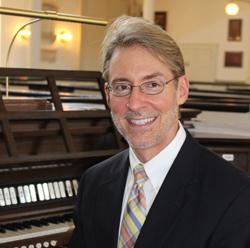
Darryl Roland has been appointed director of music ministry at St. Peter’s Church, Philadelphia, Pennsylvania. Roland leaves positions at St. Mark’s Church, Philadelphia, where he started a Choir of Boys and Girls, and at St. James School, Philadelphia, as a music instructor.
He previously served as director of music at St. Peter’s Episcopal Church, Morristown, New Jersey, canon precentor of the Cathedral Church of St. John, Wilmington, Delaware, and artistic director of the Cathedral Choir School of Delaware. The Cathedral Choir School, developed by Dr. Roland, provides music training, leadership development, mentoring, and academic support for children from underserved areas of Wilmington and has become a nationally recognized model for such programs. In 2005 he received the Coming Up Taller award, the highest honor bestowed for after-school programs for children and youth by the President’s Committee on the Arts and Humanities and its partner agencies.
Roland has been a guest lecturer and presenter for the Anglican Association of Musicians, the American Guild of Organists, universities, and seminaries where he has discussed developing intergenerational choir programs as well as collaborative ministries.

